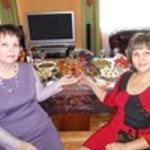
Составьте диалог между студентом первого курса и студентом пятого курса Академии. Первокурсника интересует история Академии, ее оснащение, по каким специальностям обучаются студенты. Студент пятого курса рассказывает о роли Академии в подготовке высококвалифицированных специалистов в области ветеринарии, о различных учреждениях и кафедрах

Английский: Nicholas: Hi, Daniel.
Daniel: hi, Nicholas, did you want something?
Nicholas: Yes, could you tell us the history of our University?
Daniel: Of course, at the beginning of the XX century, the Donbas became the largest industrial center of Russia. At the same time, this steppe region has established itself as an agricultural zone where commercial bread was grown. All this contributed to the opening of an educational institution here that can meet the needs of developing agriculture. To this end, the tsarist government planned to open some agricultural training schools and technical schools in Ukraine. In the Donbas, Luhansk, a large industrial city in Eastern Ukraine, was chosen as such a center. In 1914, a one-story agricultural school building was built. In October 1921, the Donetsk provincial Department of education decided to establish an agricultural Institute. In the fall of 1930, it was renamed the Institute of vegetable growing. In 1934, the Institute was renamed again, now the Institute of fruit and vegetable production with an educational and experimental farm, and in 1936 it was reorganized into an agricultural Institute. During these years, the Institute has developed a strong team of scientists known throughout the country: Professor N. G. Rotmistrov, who researched the field of field plant culture and soil cultivation, Professor N.E. Safronov-a polymath in the field of vegetable and fruit crops selection, Professor L. A. Hristeva, who developed a new method for obtaining fertilizers from coal rocks, professors A.D. Polishchuk, P. M. Beletsky, M. S. Utkin, A. A. Orlov, M. A. Savchenko and many other scientists and teachers. But the progressive development of the Institute was interrupted by the great Patriotic war. In one of the classrooms, exams were held and graduates who received a diploma moved to another classroom, where representatives of the military enlistment office issued directions for training in military schools or at the front. The new academic building was rebuilt as a military hospital. In September 1945, the first post-war graduation of agronomists took place in a solemn atmosphere. In 1946, a correspondence Department for training specialists was organized, which was immediately recognized by the workers. From 1960 to 1980, the Institute built: the academic building of the faculty of agricultural mechanization, the new main building, the building of the faculty of agricultural construction, three dormitories for students, a canteen, and a large sports complex. Currently, the University has 7 faculties, the center for Humanities education, each of which is located in a separate building. students can use well-equipped classrooms, modern equipment, a library, 8 dormitories, a sports complex, a Palace of culture, and a Museum.
Nicholas: thank you very much. Could you tell us what are the specialties in the course of veterinary medicine?
Daniel: Nezachto, and are trained on the course: bachelor, Veterinarian
